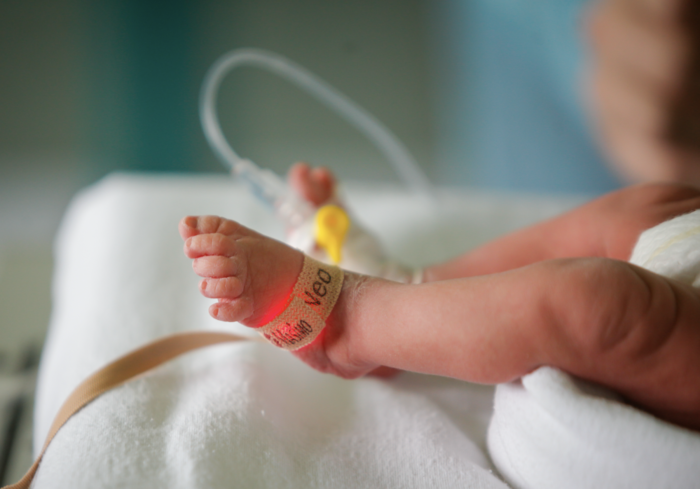False Alarms Signal Urgency of Infant-Specific Devices
August 2, 2021
By Mitchell Goldstein, MD
I am a neonatologist by training, a “neo-gadgetologist” by passion. I love testing out device prototypes and integrating new technologies at the hospital where I practice. I get excited by their potential to improve care for the infants we treat.

But when it comes to medical innovation, I am acutely aware that not all patients are the same. The premature babies I care for are not just tiny adults. We cannot just give them a smaller dose of an adult medication or use a smaller version of an adult device and expect the same outcome.
Take a pulse oximeter, for example. Most people know it as the “ET light” that goes on the end of your finger. The sensor measures the oxygen saturation in a patient’s blood.
The pulse oximeter was first developed in the early 1970s. Its widespread use helped reduce fatalities. Oxygen saturation monitoring became another vital sign – along with temperature, blood pressure, pulse rate and respiratory rate. The device saved thousands of – mostly adult – lives.
As recently as the early 1990s, however, the devices were unreliable when used on children, especially tiny babies. Monitoring in situations where there was high motion and low perfusion – reduced blood flow to the fingers and toes – was not an easy task. The device was designed to work in mostly optimal conditions on adult patients.
The frequent alarming and inability to rely on these devices led to some babies inadvertently receiving too much oxygen. Excess oxygen can cause retinopathy of prematurity, the condition that robbed singer-songwriter Stevie Wonder of his sight shortly after birth in 1950.
In the NICU, the machines constantly alerted us about inaccurate low oxygen saturation or an inability to read a saturation at all. Frustrated by the false alarms, a colleague walked around one day and unplugged all the machines. While we eventually plugged them all back in, his bold move caught my attention. These newborns needed someone to adapt the technology for their use. That work was already underway, but getting this technology to those most in need was yet another challenge.
I share this story as a reminder of the vital role of ongoing innovation.
Dr. Takuo Aoyagi’s initial pulse oximeter saved tens of thousands of lives. I am thankful he – and subsequent innovators – did not stop with the first iteration of this device, or we’d still have morbidity and mortality from conditions that are now preventable, especially among premature babies.
In addition to infant pulse oximetry, the newborns I treat rely on various medical technologies every day. Some are standalone machines; others are devices carefully, surgically implanted in even the tiniest babies. All allow me to practice more patient-centered care. They also pique my interest in what is around the corner.
Propelling the next generation of medical devices from concept to reality requires financial support and political capital. It requires a willingness from patients to participate in clinical trials and from providers, like me, to be early adopters. This broad show of support is necessary to advance the practice of medicine – and save lives. We must challenge each horizon daily and look to what the dawn of each new technology brings.

Mitchell Goldstein, MD, is a neonatologist in Loma Linda, California and the medical director for the National Coalition for Infant Health.

Breakthrough, an IfPA blog series, offers health care providers a voice in the ever-growing conversation about innovation and value.
Tags: Breakthrough, Infant, InnovationCategorized in: Blog

